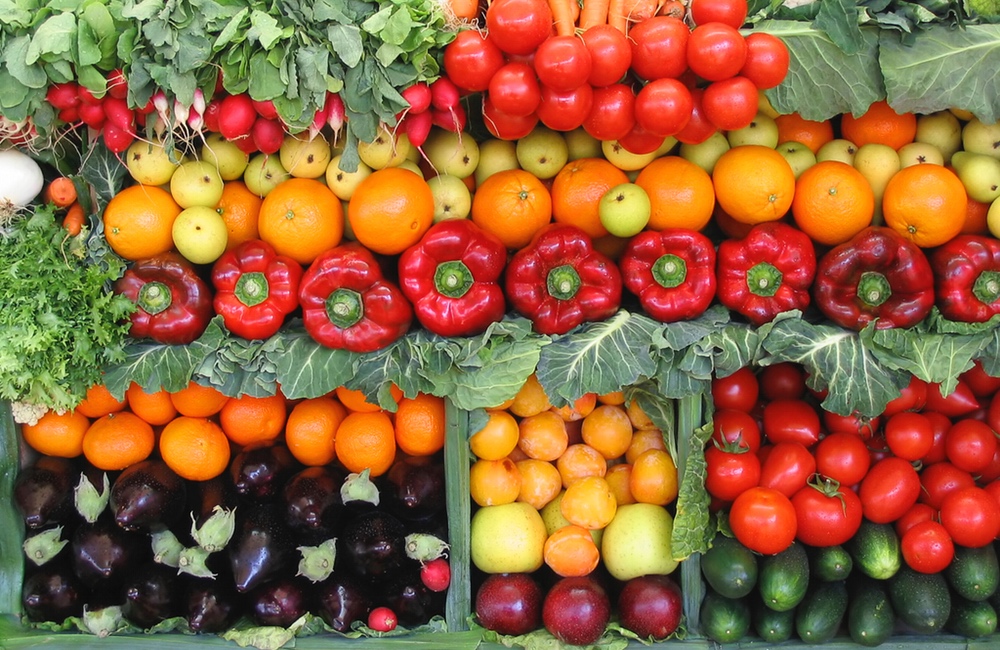Five a day — that’s the number of servings of fruits and vegetables you should eat every day. It’s also the name of a nutritional campaign promoted on both sides of the Atlantic.
There is a little more to it, though, if you want to reap the most benefits from your fruit and veggie consumption, such as reducing your risk of developing cardiovascular disease and cancer, two of the leading causes of death.
Unfortunately, only about 10 percent of Americans meet the Five-a-Day goal, which assumes a serving size as being about one medium-sized piece of fruit and between one-half and one cup of vegetables, depending on their density. Go for a cup of spinach or other leafy vegetable and a half cup of peas.If your Five-a-Day fruit and vegetable intake is made up of corn, peas, potatoes and fruit juice, it’s time to branch out and add some new fruits and vegetables to your diet.
Dietary information from nearly two million people was analyzed by Harvard Medical School and Brigham and Women’s Hospital researchers. The team looked at combined dietary information recorded in the Nurses’ Health Study and the Health Professionals Follow-Up Study, along with data collected in 26 other studies from around the world.
People who ate five servings of fruits and vegetables daily had the lowest risk of death. The combination of two servings of fruit and three servings of vegetables daily appeared to provide the greatest health benefits and longevity.
People who ate five servings of fruits and vegetables each day were 13 percent less likely to die from any cause and 12 percent less likely to die of any type of cardiovascular condition, such as heart disease or stroke, compared to those who only ate two servings of fruits and vegetables daily. Eating five servings of fruits and vegetables a day led to a 12 percent reduction in the risk of dying from cancer and a 35 percent reduction in the risk of death from diseases of the lungs.
“This research provides strong evidence for the lifelong benefits of eating fruits and vegetables and suggests a goal amount to consume daily for ideal health,” Anne Thorndike, chair of the American Heart Association’s nutrition committee, said in a statement, adding, “Fruits and vegetables are naturally packaged sources of nutrients that can be included in most meals and snacks, and they are essential for keeping our hearts and bodies healthy.”
Not all fruits and vegetables offered the same degree of protection against disease, however. Peas, corn and potatoes, often referred to as starchy vegetables, and fruit juice showed no health benefits. Fruits and vegetables rich in vitamin C and beta carotene provided the right kind of nutritional protection. Citrus fruits, broccoli, purple cabbage, kiwi and cantaloupe are good sources of vitamin C, while brightly colored produce like carrots, sweet potatoes, butternut squash, cantaloupe and apricots provide beta carotene. Kale, spinach and dark green lettuce are the leafy green vegetables you want to turn to for the biggest benefits. Blueberries and strawberries add valuable flavonoids to your diet.Fruits and vegetables rich in vitamin C and beta carotene provide the right kind of nutritional protection.
The American Heart Association recommends filling at least half your plate with fruits and vegetables at each meal. The takeaway from this study is that the kinds of fruits and vegetables matter, too. If your Five-A-Day fruit and vegetable intake is made up of corn, peas, potatoes and fruit juice, it’s time to branch out and add some new fruits and vegetables to your diet.
The study is published in Circulation.





